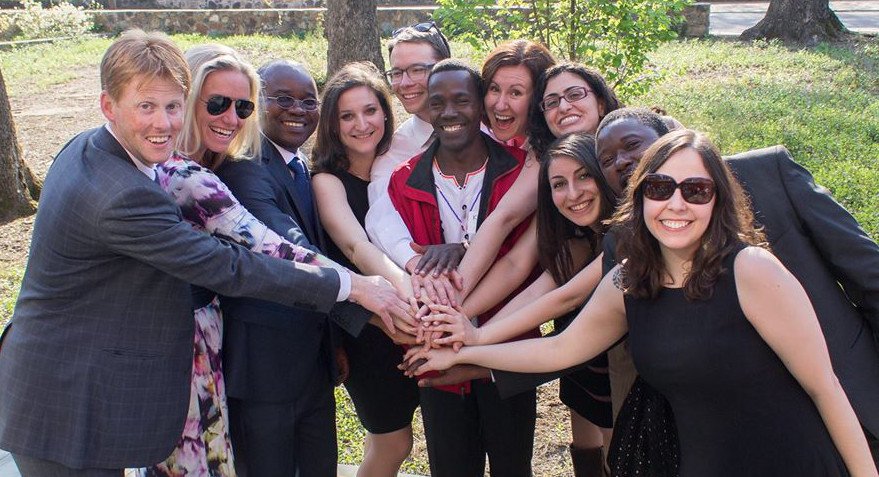Silvia Fontana| 28th June 2016
The recent UK referendum on EU gives us a good starting point to the discussion on the importance of re-building a culture of peace in our communities through education. Mere propaganda, poor analysis of the phenomena and/or institutions of our days, in primis (for the UK debate) the refugees challenges and the EU dynamics and transfer mechanisms. The stats on referendum result showed a nation extremely divided by age, level of education and by geography (center vs periphery). Unfortunately, in the days after the referendum result a rise in racist incidents occurred in UK. Apart from the disastrous result, what strikes me the most is the low level of social cohesion that UK demonstrated during this important moment.
Fear won on acceptance, money won on unity.
Despite the high economic impact of violence on the global economy, which is USD $ 13.6 trillion – equivalent to USD $ 1,876 per person, we continue to divide each other, we continue to build walls instead of bridges. Indeed, global inequality in Peace[1] has widened in 2016 and the world became less peaceful in 2016, reinforcing an underlying decade-long deterioration in world peacefulness.
How do we move forward? Education on Peace is the key.
As recently stated by Amartya Sen, in this difficult moment, EU should recall its founding principles of the Ventotene Manifesto (1941) which were not primarily on financial systems (banks and money) but rather on peace and a political and social integration of European countries.
Were we lost in the process? Yes, definitely. I do believe we might have focused our attention only to the system itself rather than to the humans involved in it. We do have a chance to change the status quo towards more peaceful societies. Where do we start? We must start by educating our communities towards Positive Peace[2].
Positive Peace: not just a concept but a plan of actions for our societies
Positive Peace refers to the attitudes, institutions and structures that sustain peace. According to the findings of the Institute for Economics and Peace (IEP), countries with high positive peace are more likely to maintain their stability, adapt and recover from both internal and external shocks. The Institute defines eight factors that contribute to Positive Peace:
- Equitable distribution of resources
- Sound business environment
- High level of human capital
- Good relations with neighbors
- Free flow of Information
- Well-functioning government
- Low levels of corruption
- Acceptance of the rights of others
These factors not only sustain peace but also support an environment where human potential flourishes. They interact in complex ways and can be used as a basis to measure a country’s resilience and, therefore, the ability to predict the likelihood of conflict, violence and stability[3]. With a better understanding and sharing on the importance of these pillars, each community can define specific actions for improving their level of acceptance, social cohesion, and peacefulness. One of these factors is High level of human capital. This factor can be reached through programs aimed at educating citizens and promoting the development of knowledge and sharing on the main challenges affecting our local and global communities. These programs will be components of an integrated approach towards positive peace, a more comprehensive definition of peace where social cohesion, acceptance, human rights, sustainable development, green economy are the different facets of positive peace.
Education is key
We need to educate citizens and promote the development of knowledge. Education is a fundamental building block through which societies can build resilience and develop mechanisms to learn and adapt themselves against shocks (IEP, 2016).
In conclusion, We have to move from a culture of violence to a culture of peace. “War begins in the minds of men, it is in the minds of men that the defences of peace must be constructed“.
[1] 2016 Global Peace Index report. The Global Peace Index is the world’s leading measure of global peacefulness produced by IEP. It considers on-going domestic and international conflict, safety and security in society, and the degree of militarization in 163 countries and territories by taking into account 23 indicators.
[2] Negative Peace is the absence of violence or fear of violence. Positive Peace represents the capacity for a society to meets the needs of its citizens, reduces the number of grievances that arise and resolve remaining disagreements without the use of violence. See Johan Galtung (1969), Violence, Peace, and Peace Research, Journal of Peace Research.
[3] IEP measures Positive Peace using the Positive Peace Index (PPI), which measures the level of Positive Peace in 162 countries, covering 99 per cent of the world’s population. The PPI is composed of 24 indicators to capture the eight domains of Positive Peace. See the PPI report here: https://www.visionofhumanity.org/#page/news/1264



